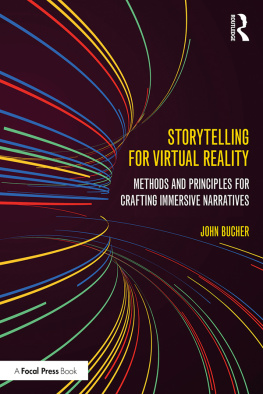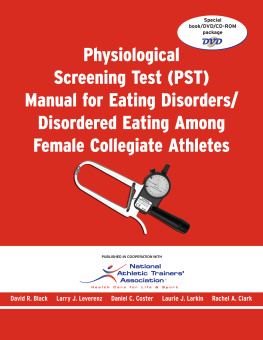Methods and Principles in Medicinal Chemistry
Edited by R. Mannhold, H. Kubinyi, G. Folkers
Editorial Board
H. Buschmann, H. Timmerman, H. van de Waterbeemd, T. Wieland
Previous Volumes of this Series:
Rautio, Jarkko (Ed.)
Prodrugs and Targeted Delivery
Towards Better ADME Properties
2011
ISBN: 978-3-527-32603-7
Vol. 47
Smit, Martine J. / Lira, Sergio A. / Leurs,
Rob (Eds.)
Chemokine Receptors as Drug Targets
2011
ISBN: 978-3-527-32118-6
Vol. 46
Ghosh, Arun K. (Ed.)
Aspartic Acid Proteases as Therapeutic Targets
2010
ISBN: 978-3-527-31811-7
Vol. 45
Ecker, Gerhard F. / Chiba, Peter (Eds.)
Transporters as Drug Carriers
Structure, Function, Substrates
2009
ISBN: 978-3-527-31661-8
Vol. 44
Faller, Bernhard / Urban, Laszlo (Eds.)
Hit and Lead Profiling
Identification and Optimization of Drug-like Molecules
2009
ISBN: 978-3-527-32331-9
Vol. 43
Sippl, Wolfgang / Jung, Manfred (Eds.)
Epigenetic Targets in Drug Discovery
2009
ISBN: 978-3-527-32355-5
Vol. 42
Todeschini, Roberto / Consonni, Viviana
Molecular Descriptors for Chemoinformatics
Volume I: Alphabetical Listing /
Volume II: Appendices, References
2009
ISBN: 978-3-527-31852-0
Vol. 41
van de Waterbeemd, Han / Testa,
Bernard (Eds.)
Drug Bioavailability
Estimation of Solubility, Permeability, Absorption and Bioavailability
Second, Completely Revised Edition
2008
ISBN: 978-3-527-32051-6
Vol. 40
Ottow, Eckhard / Weinmann, Hilmar (Eds.)
Nuclear Receptors as Drug Targets
2008
ISBN: 978-3-527-31872-8
Vol. 39
Vaz, Roy J. / Klabunde, Thomas (Eds.)
Antitargets
Prediction and Prevention of Drug Side Effects
2008
ISBN: 978-3-527-31821-6
Vol. 38
Series Editors
Prof. Dr. Raimund Mannhold
Molecular Drug Research Group
Heinrich-Heine-Universitt
Universittsstrasse 1
40225 Dsseldorf
Germany
Prof. Dr. Hugo Kubinyi
Donnersbergstrasse 9
67256 Weisenheim am Sand
Germany
Prof. Dr. Gerd Folkers
Collegium Helveticum
STW/ETH Zurich
8092 Zurich
Switzerland
Volume Editor
Prof. Dr. Christoph Sotriffer
University of Wrzburg
Institute of Pharmacy and Food Chemistry
Am Hubland
97074 Wrzburg
Germany
Cover Description
Virtual screening is a process of hierarchical filtering, searching compounds from chemical space that are suitable for interaction with targets from biological space. The illustrated hit stems from a virtual screening study conducted by Brenk et al. (2003), which is discussed in chapters 10 and 12 of this book. (Support by Dr. Matthias Zentgraf in preparation of this graph is gratefully acknowledged.)
All books published by Wiley-VCH are carefully produced. Nevertheless, authors, editors, and publisher do not warrant the information contained in these books, including this book, to be free of errors. Readers are advised to keep in mind that statements, data, illustrations, procedural details or other items may inadvertently be inaccurate.
Library of Congress Card No.: applied for
British Library Cataloguing-in-Publication Data
A catalogue record for this book is available from the British Library.
Bibliographic information published by the Deutsche Nationalbibliothek
The Deutsche Nationalbibliothek lists this publication in the Deutsche Nationalbibliografie; detailed bibliographic data are available on the Internet at http://dnb.d-nb.de .
2011 WILEY-VCH Verlag & Co. KGaA, Boschstr. 12, 69469 Weinheim, Germany
All rights reserved (including those of translation into other languages). No part of this book may be reproduced in any form by photoprinting, microfilm, or any other means nor transmitted or translated into a machine language without written permission from the publishers. Registered names, trademarks, etc. used in this book, even when not specifically marked as such, are not to be considered unprotected by law.
Typesetting Thomson Digital, Noida, India
Printing and Binding ???
Cover Design Schulz Grafik-Design, Fugnheim
Printed in the Federal Republic of Germany
Printed on acid-free paper
ISBN: 978-3-527-32636-5
Dedicated with love to Edith, Mathilde, Jonathan, and Therese
List of Contributors
ric Arnoult
Janssen-Cilag S.A.
Campus de Maigremont
BP 615
27106 Val de Reuil Cedex
France
Jrgen Bajorath
Rheinische Friedrich-Wilhelms
Universitt
Department of Life Science Informatics
B-IT, LIMES Program Unit Chemical
Biology and Medicinal Chemistry
Dahlmannstr. 2
53113 Bonn
Germany
Daniele Bemporad
Janssen Pharmaceutical N.V.
Johnson & Johnson Pharmaceutical
Research and Development
Turnhoutseweg 30
2340 Beerse
Belgium
Markus Boehm
Pfizer Pharma Therapeutics R & D
Worldwide Medicinal Chemistry
Eastern Point Rd
Groton, CT 06340
USA
Christophe Buyck
Tibotec BVBA
Turnhoutseweg 30
2340 Beerse
Belgium
Amedeo Caflisch
University of Zurich
Department of Biochemistry
Winterthurerstrasse 190
8057 Zurich
Switzerland
Claudio N. Cavasotto
University of Texas at Houston
School of Biomedical Informatics
7000 Fannin, Ste. 600
Houston, TX 77030
USA
Jason C. Cole
University of Cambridge
Crystallographic Data Centre
12 Union Road
Cambridge CB2 1EZ
UK
Maxwell D. Cummings
Tibotec BVBA
Turnhoutseweg 30
2340 Beerse
Belgium
Preface
In an early definition by Walters, Stahl, and Murcko [1], virtual screening (VS) is described as the Use of high-performance computing to analyze large databases of chemical compounds in order to identify possible drug candidates.
Virtual screening has become an integral part of the drug discovery process. It has largely been a numbers game focusing on questions like how can we filter down the enormous chemical space of over 1060 conceivable compounds to a manageable number that can be synthesized or purchased and tested. Although filtering the entire chemical universe might be a fascinating question, more practical VS scenarios focus on designing and optimizing targeted combinatorial libraries and enriching libraries of available compounds from in-house compound repositories or vendor offerings.
The purpose of virtual screening is to come up with hits of novel chemical structure that bind to the macromolecular target of interest. Thus, success of a virtual screen is defined in terms of finding interesting new scaffolds rather than many hits. Interpretations of VS accuracy should therefore be considered with caution. Low hit rates of interesting scaffolds are clearly preferable over high hit rates of already known scaffolds.
In a logical and didactic way, this volume is organized in four parts covering principles, challenges, practical guidelines, and case studies under different scenarios. Chapters of Part One are dedicated to virtual screening of chemical space, processing of small molecule databases for virtual screening, ligand-based and target-based virtual screening, virtual screening with 3D pharmacophore models, and docking methods. Challenges discussed in Part Two comprise affinity prediction, fragment-based approaches, handling of protein flexibility, as well as consideration of water and solvation effects, as well as parallel virtual screening for compound profiling and prediction of off-target effects. Finally, strategies, recommendations, and caveats for applying virtual screening methodology are given and many success stories are described.
Next page




